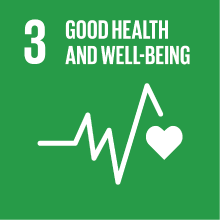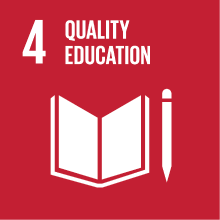HISTORY OF BUDDHISM: ARCHEOLOGY AND MATERIAL CULTURE
- Academic year
- 2024/2025 Syllabus of previous years
- Official course title
- STORIA DEL BUDDHISMO: ARCHEOLOGIA E CULTURA MATERIALE
- Course code
- LT2955 (AF:539475 AR:223920)
- Teaching language
- English
- Modality
- On campus classes
- ECTS credits
- 6
- Degree level
- Bachelor's Degree Programme
- Academic Discipline
- L-OR/16
- Period
- 2nd Semester
- Course year
- 3
- Where
- VENEZIA
- Moodle
- Go to Moodle page
Contribution of the course to the overall degree programme goals
By the end of this course a typical student should be able to do most of the following:
Locate the origins of Buddhism in its socio-religious context;
• Outline the spread of Buddhism in South Asia;
• Explain the fundamental concepts of Buddhism and relate these to the practices;
• Describe its main scriptural authorities;
• Identify a range of motivations underlying ordination and the relation between monasteries and the society;
• Discuss some of the above with reference to relevant primary and secondary sources.
The course is an elective for the BA in Languages, Cultures and Societies of Asia and North Africa.
Expected learning outcomes
1. Have gained a good knowledge and critical understanding of the main topics concerning the cultural history of early Buddhism in South Asia;
2. Have gained an understanding of the continuities and discontinuities between the main schools of early Buddhism;
3. Be able to find and use critically a range of materials including books, journals, primary sources, and web-based resources relevant to the topics studied in the course.
4. Write a sustained argumentative essay on the basis of their study of the bibliography of the course.
Pre-requirements
Contents
The course will approach the subject through the following path:
1) Geography and general chronology (introduction)
2a) Life and Geography of the Buddha (readings from Buddhist texts, in particular from the Mahaparinibbanasutta; commentary by O. von Hinüber)
2b) Birth and first spread of Buddhism: chronological problems and archaeological debate (readings on the historicity of the Buddha)
3a) The Maurya phase: sites, religious policies, epigraphy
3b) Expansion of early Buddhism in the North-West: sites and archaeological evidence (readings from Heirman e Bumbacher 2022)
3c) The texts of the Maurya edicts
3d) Indo-Greeks (selected readings from the Minindapanha)
4a) How to read Buddhist art
4b) Gandhara (North-West, including Kapisa) and Mathura
5) The End of Buddhism in South Asia (Reading: R. Salomon; Himanshu P. Ray)
Referral texts
Prabha Ray, H. (2014) The Return of the Buddha: Ancient Symbols for a New Nation. Routledge
Olivieri, Luca M. (2022) Stoneyards and Artists in Gandhara. The Buddhist Stupa of Saidu Sharif I, Swat (c. 50 CE)
Heirman, A. and S.P. Bumbacher,(2007) The Spread of Buddhism. Brill .
Salomon, R. (2018) The Buddhist Literature of Ancient Gandhara. Wisdom.
Strathern A. The Two Forms of Religion: Being and Nothingness. In: Unearthly Powers: Religious and Political Change in World History. Cambridge University Press; 2019:27-106
Williams, P., A. Tribe, A. Wynne (2012) Buddhist Thought. A Complete Introduction to the Indian Tradition. Routledge.
Selected texts and epigraphic material will be available on Moodle.
Assessment methods
The final assessment of learning (exam) will be preceded by the submission and correction of an essay (maximum 4000 words in Italian or English) on a topic of your choice in which you cite the reference texts.
Type of exam
Grading scale
Teaching methods
Before the last class, the candidate is recommended to present a short (max. 4000 words in English or Italian) research essay on a topic selected by the candidate that references and cites the texts we have studied. The essay can be 5-10 pages including the introduction and references. The APA style can be adopted for references (see e.g. https://www.iup.edu/writingcenter/writing-resources/research-and-documentation/apa-style/what-is-apa.html ; https://libguides.csudh.edu/ld.php?content_id=52097964 ). The essay should be submitted before the last class, so that suggestions can be made on both form and content before the oral exam takes place.
Further information
2030 Agenda for Sustainable Development Goals
This subject deals with topics related to the macro-area "Human capital, health, education" and contributes to the achievement of one or more goals of U. N. Agenda for Sustainable Development


